The Liverpool and Manchester railway is carried over the nearby Sankey Viaduct, built by George Stephenson. The line opened on 15 September 1830, marking the start of the modern railway system. The viaduct is a grade I listed structure, with nine arches (each 21.3m high, with a 15.2m span). Known locally as ‘the nine arches’, this is the world’s oldest railway viaduct still in operation.
An illustration and text about the Sankey Viaduct.
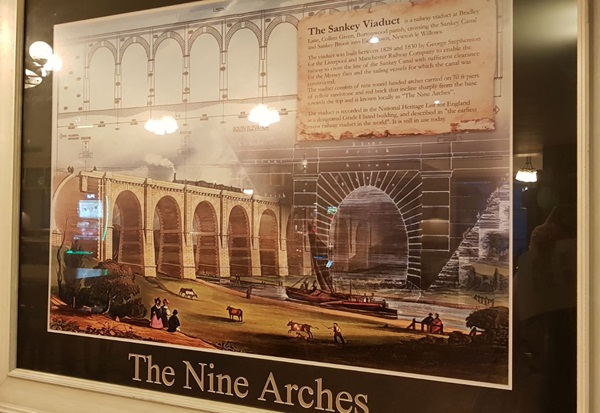
The text reads: The Sankey Viaduct is a railway viaduct at Bradley Lane, Collins Green, Burtonwood parish, crossing the Sankey Canal and Sankey Brook into Earlestown, Newton-le-Willows.
The viaduct was built between 1828 and 1830 by George Stephenson for the Liverpool and Manchester Railway Company to enable the railway to cross the line of the Sankey Canal with sufficient clearance for the Mersey flats and the sailing vessels for which the canal was constructed.
The viaduct consists of nine round headed arches carried on 70ft piers of yellow sandstone and red brick that incline sharply from the base towards the top and is known locally as The Nine Arches.
The viaduct is recorded in the National Heritage List for England as a designated grade I listed building, and described as “the earliest major railway viaduct in the world”. It is still in use today.
A photograph and text about the first locomotive.
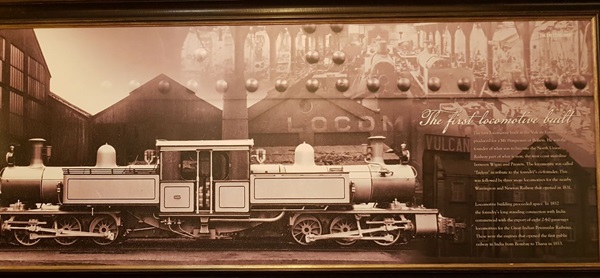
The text reads: The first locomotive built at the Vulcan Foundry was produced for a Mr Hargreaves of Bolton. He was the founder of what was to become the North Union Railway, part of what is now, the west coast mainline between Wigan and Preston. The locomotive was called Tayleur in tribute to the foundry’s co-founder. This was followed by three more locomotives for the nearby Warrington and Newton Railway that opened in 1831.
Locomotive building proceeded apace. In 1852 the foundry’s long standing connection with India commenced with the export of eight 2-4-0 passenger locomotives for the Great Indian Peninsular Railway. These were the engines that opened the first public railway in India from Bombay to Thana in 1853.
A photograph and text about the Vulcan Foundry.
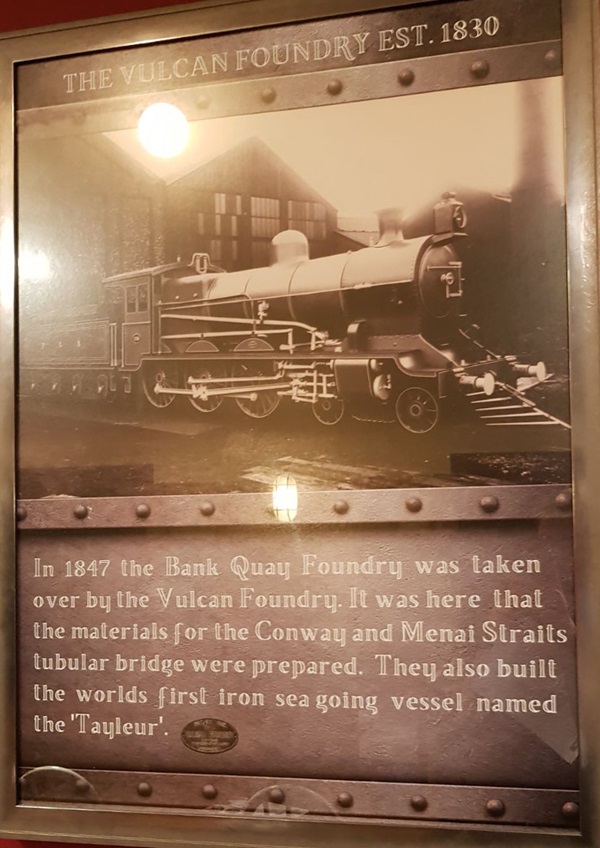
The text reads: In 1847 the Bank Quay Foundry was taken over by the Vulcan Foundry. It was here that the materials for the Conway and Mania Straits tubular bridge were prepared. They also built the world’s first iron sea going vessel named the Tayleur.
Photographs and text about the Vulcan Foundry.
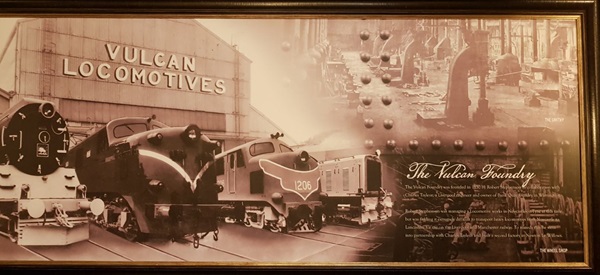
The text reads: The Vulcan Foundry was founded in 1830 by Robert Stephenson, in collaboration with Charles Tayleur, a Liverpool engineer and owner of Bank Quay Foundry in Warrington.
Robert Stephenson was managing a locomotive works in Newcastle-upon-Tyne, but was finding it extremely difficult to transport heavy locomotives from Newcastle to Lancashire for use on the Liverpool and Manchester railway. To remedy this he went into partnership with Charles Tayleur and built a second factory in Newton-le-Willows.
An illustration and text about the Vulcan Foundry.
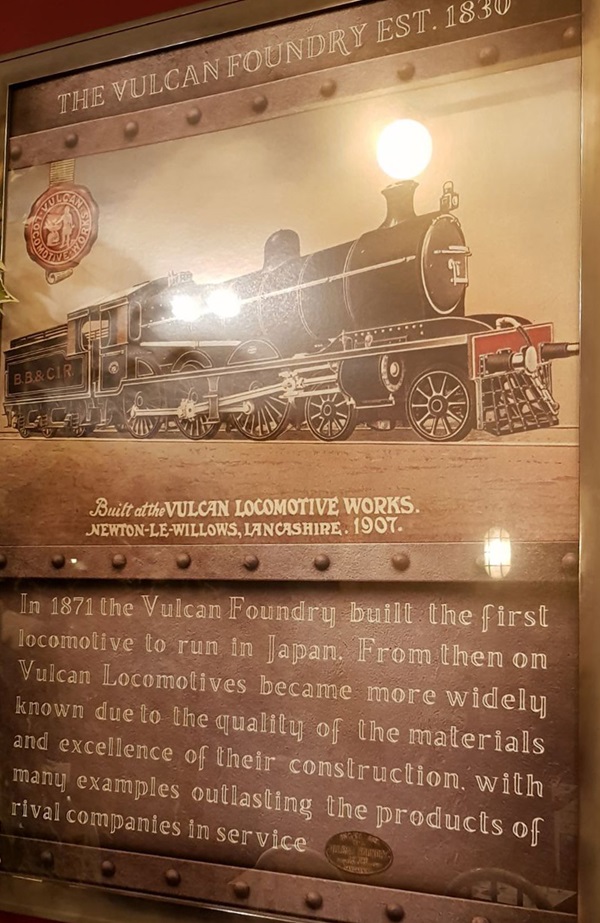
The text reads: in 1871 the Vulcan Foundry built the first locomotive to run in Japan. From then on Vulcan Locomotives became more widely known due to the quality of the materials and excellence of their construction, with many examples outlasting the products of rival companies in service.
Prints and text about McCorquodale Railway Printers.
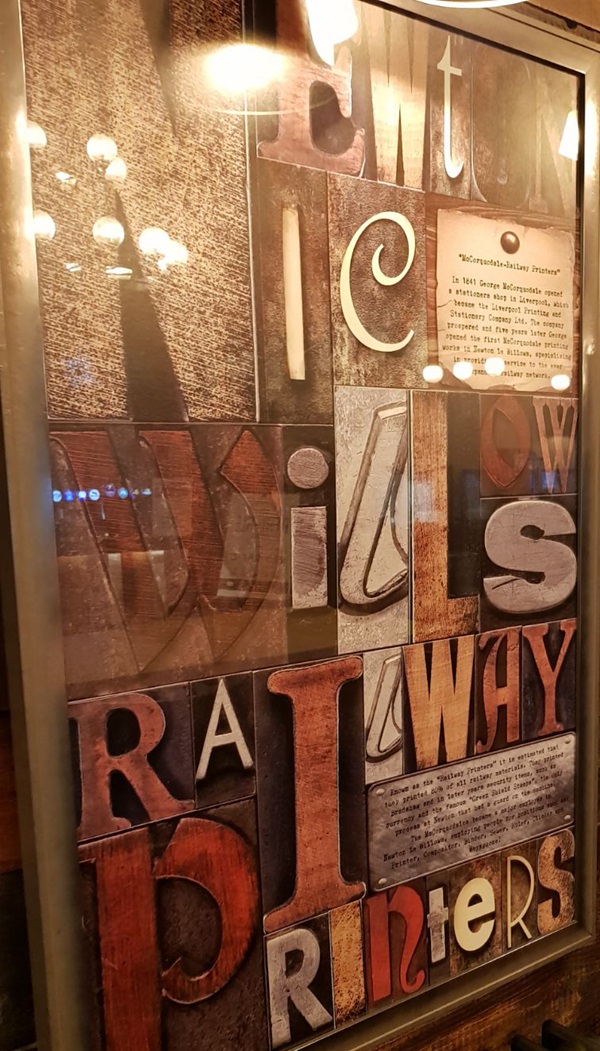
The text reads: In 1841 George McCorquodale opened a stationers shop in Liverpool, which became the Liverpool Printing and Stationary Company Ltd. The company prospered and five years later George opened the first McCorquodale printing worked in Newton-le-Willows, specialising in providing a service to the ever expanding railway network.
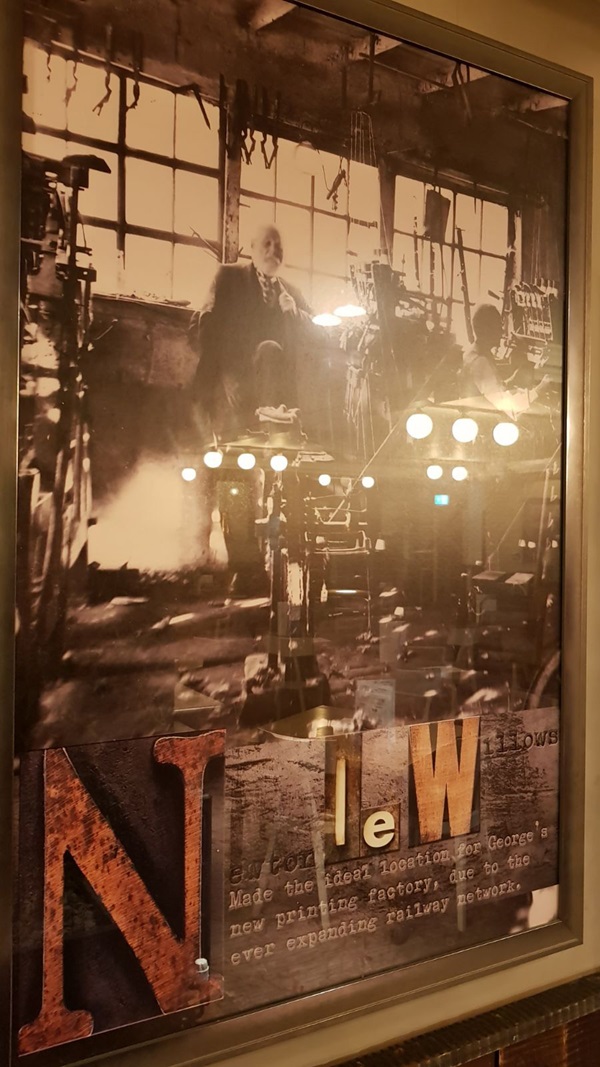
The text reads: Newton-le-Willows made the ideal location for George’s new printing factory, due to the ever expanding railway entrance.
A photograph and text about Mucky Mountains.
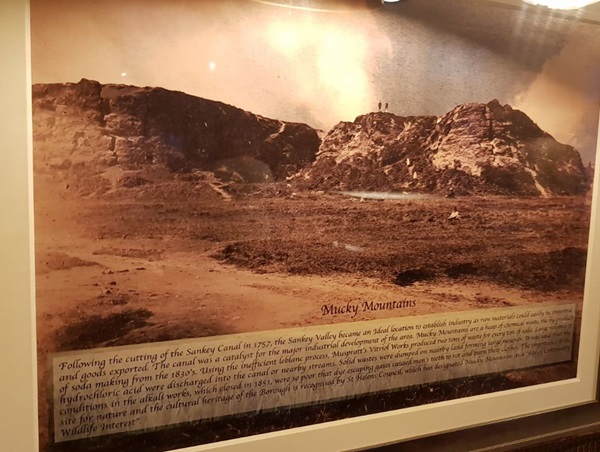
The text reads: Following the cutting of the Sankey Canal in 1757, the Sankey Valley became an ideal location to establish industry as raw materials could easily be imported and goods exported. The canal was a catalyst for the major industrial development of the area. Mucky Mountains are a heap of chemical waste, the by-product of soda making from the 1830s. Using the inefficient Leblanc process, Muspratt Vitriol Works produced two tons of the waste for every ton of soda. Large volumes of hydrochloric acid were discharged into the canal or nearby streams. Solid wastes were dumped on nearby land forming large mounds. It was said that the conditions in the alkali works, which closed in 1851, were so poor that dye escaping gases caused men’s teeth to rot and burn their clothes. The importance of the site for nature and the cultural heritage of the Borough are recognised by St Helens Council, which has designated Mucky Mountains as a “Site of Community Wildlife Interest”.
A photograph and text about High Street.
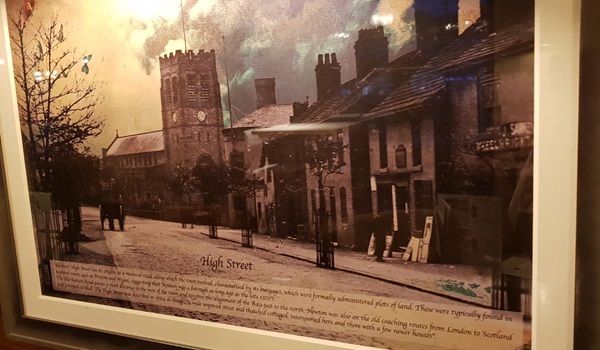
The text reads: Newton’s High Street has its origins as a medieval road, along which the town evolved, characterised by its burgages, which were formally administered plots of land. These were typically found in medieval towns such as Preston and Wigan, suggesting that Newton was a borough as long as the late 1300s.
The Old Roman Road passes a short distance to the west of the town and re-joins the alignment of the A49 just to the north. Newton was also on the old coaching routes from London to Scotland and Liverpool to Hull. The High Street was described in 1784 as being “a wide unpaved street and thatched cottages, interspersed here and there with a few newer houses”.
A sculpture entitled Spring Lamb.
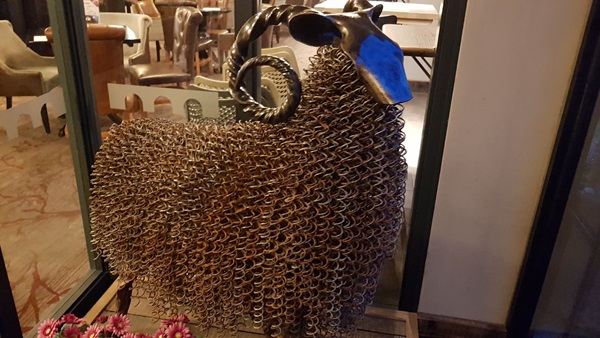
Newton-le-Willows developed as a settlement serving the agricultural community of the surrounding area which was scattered widely in isolated farmhouses.
The ram’s head is part of the Legh family coat of arms, and has become synonymous with Newton-le-Willows.
The Nine Arches’ Spring Lamb takes its inspiration from this. He is made from steel, copper and trampoline springs. Making him extra springy!
External photograph of the building – main entrance.
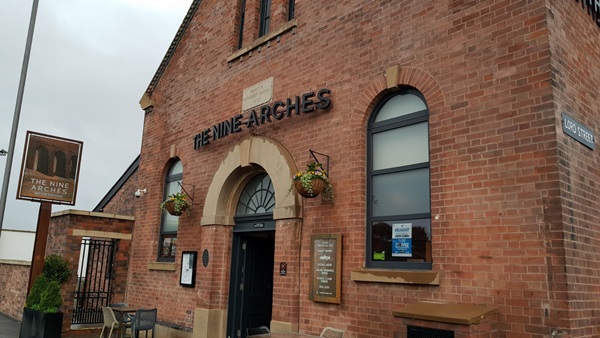
If you have information on the history of this pub, then we’d like you to share it with us. Please e-mail all information to: pubhistories@jdwetherspoon.co.uk